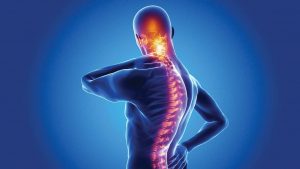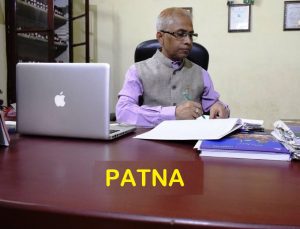What is Spondylitis?
As we age, our bodies become susceptible to deteriorative changes, particularly within the spine. Much of this decline is driven by different types of arthritis affecting joints and the spinal column. The spine bears much of the strain of everyday life – It is responsible for supporting the upper body’s weight and facilitating movement. Over time, general wear and tear begins to have long-lasting effects. The vertebral column loses its resilience while shock-absorbing, intervertebral discs lose water content, bulge or rupture, which leads to structural difficulties.
Spondylitis sometimes referred to as “spondyloarthritis,” is a form of arthritis that commonly occurs in the spine, although it can affect other joints as well. In fact, the name “spondylitis” itself is associated with a family of related diseases and conditions that are alike in their progression and symptoms but may affect various regions of the body. When spondylitis develops within the spine, the vertebral column becomes extremely inflamed. Pain and other symptoms often result. Sometimes vertebral bones even fuse together, forming a highly rigid spine and causing limited mobility.
Statistically, men are more likely to develop spondylitis than women. Symptoms typically begin appearing in early adulthood, with the loss of spinal flexibility and a hunched posture being two of the most prominent hallmarks. With more than 200,000 cases in the United States per year, spondylitis is extremely treatable when accurately diagnosed and proactively addressed. Without proper care, spondylitis generally develops into a chronic, painful condition.
Causes
There is no known cause for spondylitis, but research shows that a patient’s genetics, environment, and immune system may be determining factors for the presence of this condition. An individual is far more likely to suffer from spondylitis if they have a family history of the complication or any similar issues. Some elements that are associated with spondylitis include:
- Previous inflammation in joints and tissues, which may exacerbate similar problems spurred by spondylitis
- Lack of exercise
- Having obesity
- Smoking or the excessive use of alcohol
- Already established back problems, such as degenerative disc disease or spinal stenosis
If you have a family history of spondylitis and believe you may be at risk for developing this condition, schedule a consultation today with one of our spine specialists. Through our state-of-the-art facilities, we are able to conduct a convenient spine exam in order to identify any potential threats to your health and quality of life. By quickly and compassionately treating spine-related complications, it is often possible to alleviate or even eliminate symptoms.
Symptoms
Spondylitis is commonly confused with mechanical back pain, which usually surfaces after an actual spine injury. In contrast, spondylitis involves inflammation in the spinal joints and typically does not result from a single definitive incident. Patients with spondylitis oftentimes experience:
- Pain and stiffness anywhere from the neck through the lower back and buttocks that lasts for more than 3 months
- The discomfort that is worse in the morning or after long periods of inactivity and seems to lessen with movement and exercise
- Progressive loss of spinal flexibility and a sensation of rigidity
- Hunched or stooped posture
- Tendonitis
- Overgrowth of bones commonly called bony fusion, that may affect daily activities
- Vision problems and eye inflammation, including redness and pain
- Swelling
- Compression fractures
As spondylitis matures, it may begin to inhibit multiple regions of the body. The joints between vertebrae within the spine and the pelvis are vulnerable to spondylitis, as well as the hip and shoulder joints. Even the places where ligaments and tendons attach to the spinal bones can become affected by spondylitis.
In rare and severe cases, it is possible for spondylitis to affect the aorta, which is the large artery connected to the heart. An inflamed aorta may impair heart function. Call 911 immediately if you or a loved one are evincing symptoms of heart failure, such as chest pain, shortness of breath, fatigue, and confusion.
Our Minimally Invasive Treatment Approach
When ignored, spondylitis can lead to multiple secondary issues and chronic pain. In addition, the symptoms of spondylitis are similar to those of many other back issues, including osteoarthritis and spinal stenosis. For these reasons, it is important to receive a timely and comprehensive diagnosis if you suspect you may have spondylitis. With targeted, advanced treatment, a better life may be possible!
During your initial consultation, one of our experienced physicians will carefully assess your symptoms, medical history, and physical state. To confirm a suspected diagnosis of spondylitis, an imaging test such as a C.T. scan, MRI or X-ray will likely be requested. A blood test may also be necessary to determine if you carry a gene associated with spondylitis, called HLA-B27. Based on the information gathered, we will then design a treatment plan to provide the most optimal treatment for your unique case.
For most patients, we recommend implementing conservative, non-invasive methods of care before considering surgery. Generally, one or more of the following will be advised:
Medication: Studies show that several anti-inflammatory medications can be highly effective for the treatment of spondylitis, with much diminishing pain and improving the flexibility of the spine. At our spinal centers, which are conveniently located across the Dallas – Fort Worth metroplex, we are able to deliver medicine using advanced techniques to increase its potency. Ultrasound technology, specialized injections, and gentle electrical stimulation are just a few of the ways we are able to provide relief to the body, in addition to standard oral and topical treatments.
Physical Therapy: Often, physical therapy allows patients to strengthen the muscles that support the spine while regaining their range of motion. Through guided exercise and therapeutic massage, physical therapists encourage healing in the body and can commonly relieve the spine of persistent inflammation.
Additional Therapies: Heating and cooling modalities, the use of assistive devices and specific lifestyle adjustments can provide significant benefits for patients encountering spondylitis.
If non-surgical treatments do not supply adequate relief, surgical intervention may be discussed. Our surgeons specialize in performing some of the most advanced minimally invasive procedures available today, which use tiny incisions to drastically decrease the amount of stress placed upon the body during an operation. When compared to traditional open surgeries, minimally invasive surgeries yield many advantages, including:
- Shortened recovery times that allow patients to return to work and other activities more quickly
- Less post-operative pain
- A reduced risk of blood loss and scarring
- Minimal trauma to muscles and other soft tissues near the site of operation
On every step of your recovery, we are here to ensure that you have a positive experience and that you achieve optimal restoration.
We prove full treatment of a patient suffering from any kind of neuro problems.
Visit Our Website Today:-www.drgyanhomoeo.com
Book Your Appoint Now:-https://www.drgyanhomoeo.com/book-an-appointment/





